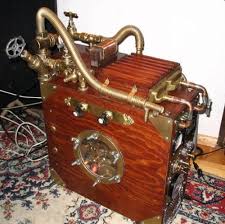How to Use Liquid-Cooling
Using liquid-cooling systems in computers can solve common problems like overheating and loud fan noise.
As consumers demand more speed and capabilities from their computers, new technologies have to be created to match PC abilities to increasing expectations. The traditional use of fans to keep computers running smoothly may soon take a backseat to liquid-cooling systems that keep computer noise to a minimum, prevent overheating and improve efficiency.
How Liquid-cooling Works

The purpose of liquid-cooling is to reduce the temperature of a computer's central processing unit (CPU) and other components like graphics cards. According to Tracy V. Wilson's Howstuffworks article 'How Liquid-Cooled PCs Work', the most basic liquid-cooling system is made up of a waterblock, coolant resevoir, a radiator, a pump and tubes. Distilled water is a common liquid used for cooling but different companies offer their own variations. Also, special additives can be used to color the fluid in order to make it more visually appealing in clear cases.
To start the process of liquid-cooling, the waterblock is mounted on the CPU. Next, the tubes are connected between the radiator and the waterblock and the radiator and the pump. Once the system is filled, the liquid draws heat away from the CPU into a radiator that cools the liquid. From the radiator the liquid travels to the reservoir where it is put back into the cycle by the pump. The cooled liquid ends its circuit by leaving the pump and traveling back across the CPU.
The Costs and Benefits of Liquid-cooling Systems

Liquid-cooling offers 3 main benefits for PC users:
It makes the computer run quieter by cutting down on fan usage.
It also prevents overheating because liquid can absorb and move heat better and faster than air.
Lastly, liquid-cooling is a great option for overclockers because it allows for higher clock speeds within the processor without causing overheating.

There are also drawbacks to liquid-cooling:
Installation can be complicated and requires plenty of time and technical knowledge.
The cost of the system and professional installation can be expensive.
Liquid-cooling systems are large and can take up alot of space in the computer case.
Users Should Do the Research

Liquid-cooling can be a pricey investment, so it is smart for users to do homework and research the various brands and systems available in the liquid-cooling market. New Egg and PC World offer detailed system specifications and product reviews from customers and professionals. Below is a list of some companies that sell liquid-cooling kits, systems and supplies.
Swiftech Inc.
Koolance
Thermaltake
Cooler Master
Giga Byte

Customized computers with liquid-cooling pre-installed are also available.
Tips for Using Liquid-cooling Systems
Unless you are a computer expert, the complexities involved with installing a liquid-cooling system in your PC are probably best left to a professional. Complications, such as leakage, can end up costing you more than hiring help.
There are many different versions of liquid-cooling systems. Make sure the system you purchase is compatible with your PC's motherboard and other components.
Decide if an internal or external liquid-cooling system is appropriate for your computer. An external system may work better for a computer case that is too small to house an internal unit
Liquid-cooling is a steadily advancing option for solving PC problems due to overheating and excessive fan noise. However, consumers should weigh the pros and cons of this method and be informed about how it works and the various types of systems available.








